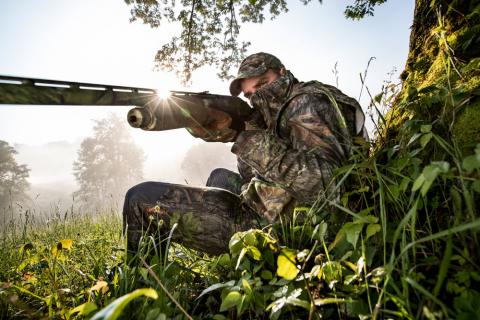Mark Turner
“Hearing a turkey gobble on an April morning” or “watching a covey rise on a January hunt” are the desired ends of many management programs. Gamekeepers recognize that producing young turkeys, bobwhites, pheasants, or whatever your preferred game fowl are, each year is necessary for that goal to be realized. Often, focus is placed on nesting success for both species, as a failed nest certainly won’t produce any offspring to hunt in the future.
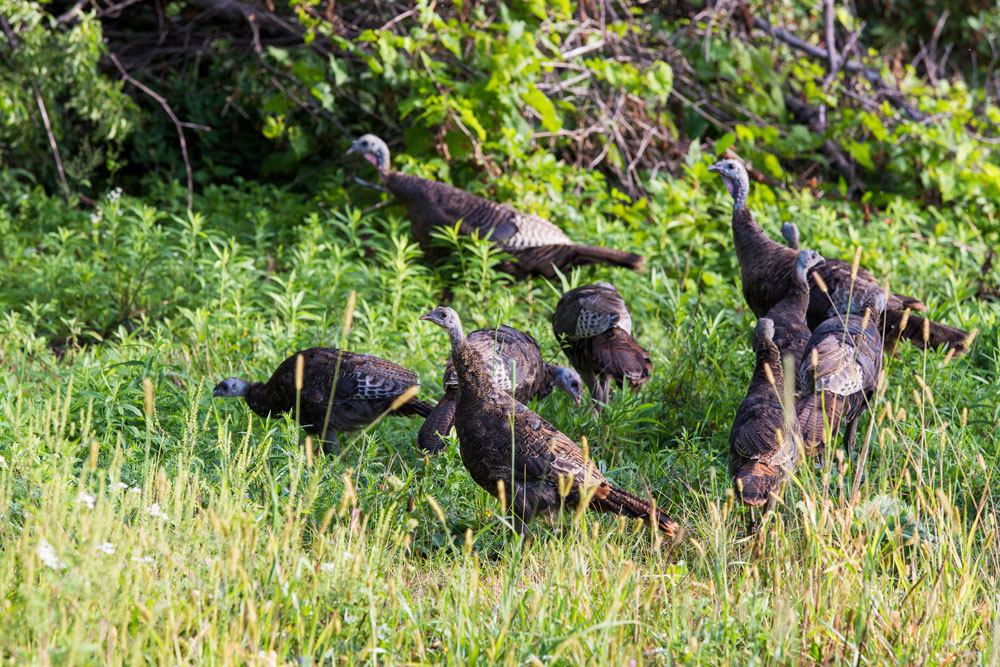
Obviously, “while in the egg” is the most helpless time in a game bird’s life. Unfortunately, the focus on “nesting cover” leads some to ignore the period when these birds are at their second most vulnerable time, during their first few weeks of life after hatching. Managers who are interested in increasing turkey and upland populations should understand what high-quality brood-rearing cover looks like, as well as how they can manage for it on their properties.
What is Brooding Cover?
Although both nesting and brooding cover are necessary to have high populations of turkeys, pheasants or bobwhites, brooding cover may be more limited than nesting cover on many properties. Turkeys can successfully nest in a variety of places, ranging from old-fields to logging debris piles. Bobwhites tend to nest adjacent to a native grass clump, but they can also successfully nest without native warm season grasses. Pheasants can also nest in many places, as long as there is enough cover to conceal a hen.
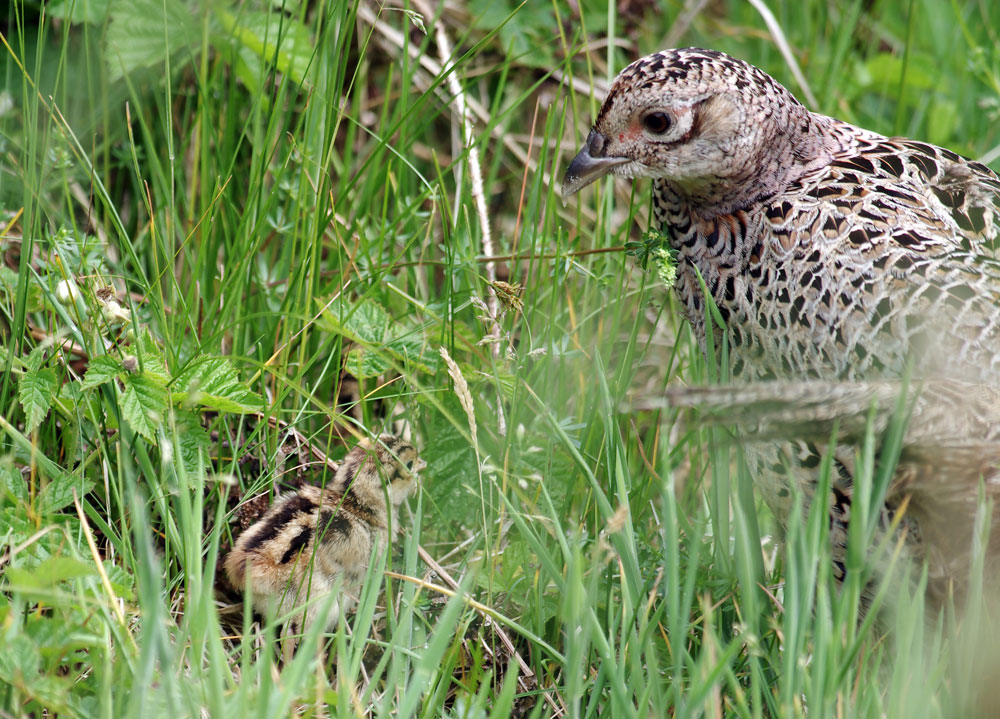
Contrasting the variety of places these game birds can utilize for nesting and brooding cover requires several specific components to be present. First, there must be enough insects for turkey poults or upland chicks to catch to derive adequate nutrition from. During their first few weeks of life, young birds are rapidly growing and require a diet that is higher in protein than plant material alone can typically provide.
Insects provide this high-protein diet, and the insects poults and chicks eat are usually attracted to herbaceous vegetation. Forbs are particularly important, as they tend to be very attractive to insects and provide the perfect structure for young birds to move through.
“Structure” may not be a term you’re familiar with in this arena, but it simply refers to “the height and density of the vegetation on a site.” Structure is critical because of the fact that having enough insects for young birds to eat is necessary, but the insects must also be accessible. Bobwhite chicks are about the size of a bumblebee after hatching, and their legs aren’t strong enough to move through dense vegetation on the ground. To ensure insects are accessible to poults and chicks, bare ground is absolutely critical.
The third component of brooding cover is visual obstruction provided to the poults or chicks by various plant types. Young birds are extremely vulnerable to predation, especially during their first few weeks of life before they can fly. If herbaceous plants aren’t present to provide overhead cover for poults and chicks, many of them will be taken by predators before they are old enough to fly.
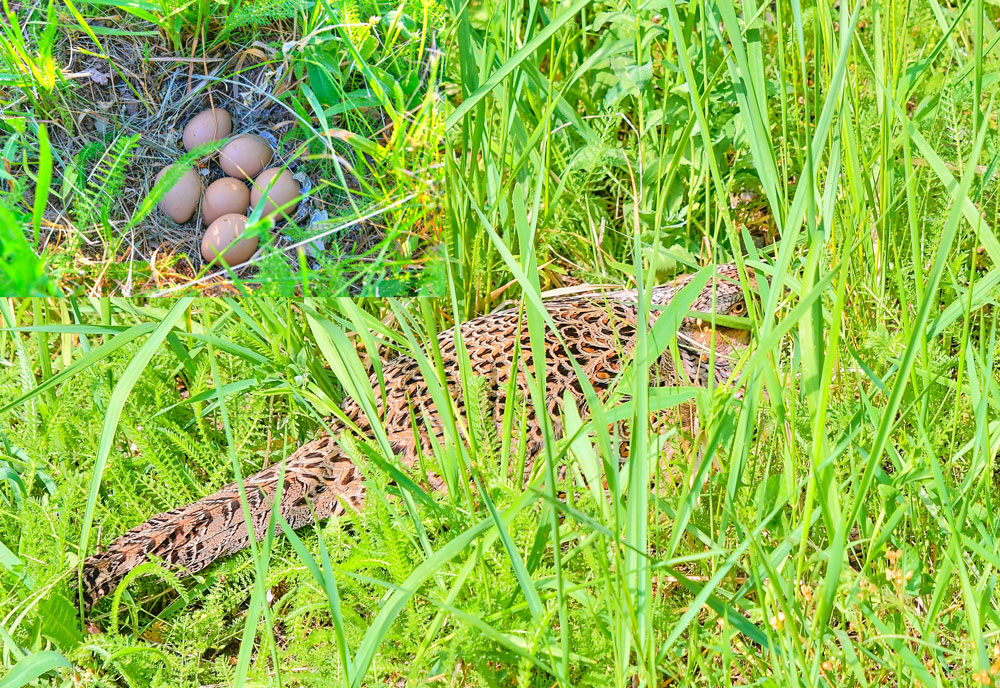
Brooding cover for turkeys or other upland birds is fairly similar, but there is one difference - the cover height and how it relates to the hen interacting with her brood. For turkeys, cover should be tall enough to conceal the body of the hen, but short enough that she can still get a good view when she raises her head. Turkey hens select areas where they can detect predators while still remaining concealed.
Cover height isn’t as important for bobwhites, as hen quail don’t rely on their vision as heavily as turkeys for predator avoidance when brooding. Fortunately, hatch timing allows many areas to provide brooding cover for both species. In recently managed areas, forb growth during May and June will be the perfect height for hen turkeys with a brood, but the taller vegetation will also be used by quail broods later in the summer. In summary, high quality brooding cover has insects, bare ground, and overhead cover, and is the right height for hen turkeys to feel comfortable using the area during May and June.
Brooding Cover in Native Vegetation
If your property lacks areas that meet the brooding cover needs of these birds, I have good news: you can fix it! Native plant communities can provide cover for poults and chicks, and it’s the job of gamekeepers to encourage the vegetation that these birds need. Planting is a useful management tool, but is usually not necessary if you view a property through the eyes of a poult or chick.
Areas dominated by ragweed, horseweed, or daisy fleabane may look like an overgrown mess to you, but they are what young birds need to survive. These “weeds” may be frowned upon by some, but chick populations don’t mind the stigma we’ve assigned them.
Fields are the first area where you should consider improving brooding cover, as areas receiving full sunlight will have the quickest vegetation response. If your property has fallow fields, old pastures, or other areas you wish to improve, the first step is evaluating what is currently there. Often, nonnative exotic grasses like tall fescue, Bermuda grass, and bahia grass dominate the site. The first step to improving these areas is killing these grasses with herbicide. Removing the carpet of sod-forming grasses allows forbs to respond, and greatly increases the amount of bare ground between plants within a field.
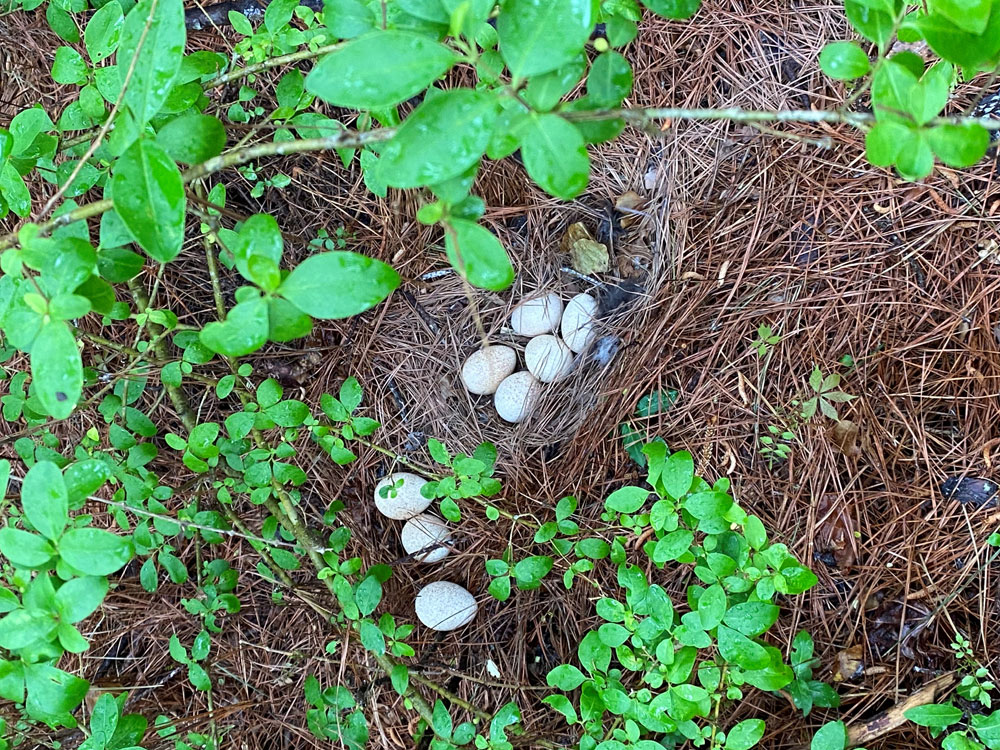
After non-native grasses have been killed, disking or prescribed fire should be applied to encourage forbs to respond. Winter disking, where possible, is one of the best ways to enhance brooding cover in fields, especially in areas that currently lack a heavy forb component. Running a fairly heavy disk over a field sometime between November and February completely resets succession, and the first year following disking the field is usually dominated by annual plants.
On many sites, common ragweed will form dense stands in disked fields, and ragweed provides excellent brooding cover! If you are planning on disking, it is important that it is conducted before spring, as disking after green-up often leads to fields dominated by annual grasses. Disking to encourage brooding cover is often conducted annually, although fields could also be split in half to rotate disturbance if desired.
Prescribed fire is another useful tool for encouraging brooding cover in fields, as it also encourages herbaceous vegetation. Burning during the dormant season is a common practice, and burned areas typically provide high-quality brooding cover the growing season immediately following a dormant season fire.
With that in mind, fire is usually applied on a 1 to 2-year rotation when managing specifically for brooding cover. Although fire is an incredibly useful habitat management tool, thought should go into its application when managing an area for brooding cover. Native grasses typically respond well to fire, and too much grass will negatively influence the ability of a poult or chick to forage. One way to encourage forbs with fire is to burn during the late growing season (August-October). Fields can be burned during other time periods as well, but including late growing season fire in a rotation can be useful. After many fires, grass coverage may dominate the stand regardless of fire timing. If that happens, using disking instead of fire for one year can likely encourage forbs.
If your property is dominated by forest, brooding cover can also be improved in the woods. The single most important factor that controls plant response is sunlight, and the forbs that provide high quality brooding cover need lots of it! With this in mind, heavily reducing tree density can improve brooding cover in both hardwood and pine forests.
In pine stands, it is often appropriate to apply commercial thinning. Hardwood forests can also be thinned commercially, or they can be improved by killing trees with herbicide. In either case, be sure that lots of sunlight can reach the ground, and plan for future treatments to maintain the brooding cover. Prescribed burning is the most effective technique to maintain forest stands for turkeys and bobwhite, although herbicide treatments may also be necessary to reduce woody plant coverage.
Brooding Cover in Food Plots
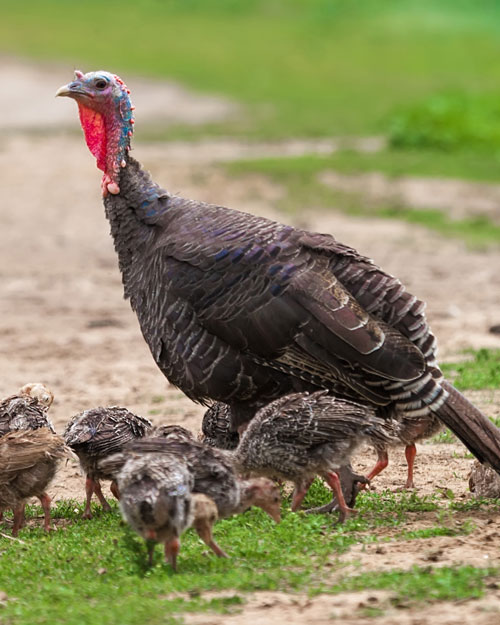
While planting is rarely needed to add brooding cover to a property, there are a few options that managers have to improve structure for brooding in food plots. In areas dominated by forest, openings may be limited to existing food plots on the site. Fortunately, food plots receive plenty of sunlight, and many plantings are attractive to insects due to their high protein values. Managing them for brooding cover takes a little bit of creativity, but both perennial and annual plantings can provide brooding cover for young birds.
If you’re like me, you’ve probably harvested a few turkeys around perennial clover plots. However, did you know that these plots can also be managed to provide cover and insects for poults? Clover is a high protein food source for insects, but the typical clover plot is too short to provide cover that poults need to hide from predators. The solution is simple - don’t mow! At least not until later during the growing season.
Typically, plots will fill with forbs such as common ragweed, daisy fleabane, and marestail that provide excellent structure for poults. These are often treated as weeds in food plots, but they provide structure for poults and additional forage for deer, all at a time when clover is often not producing high quantities of forage due to summer heat. Forbs that provide brooding cover typically don’t capture all of the sunlight, allowing clover to continue growth underneath a thin canopy that provides cover for poults. Although managers don’t want these weeds to overtake the plot, a single mowing during the late summer can be an effective strategy for weed control after poults are grown.
There are certainly weeds that should be controlled in clover plots, but spot treatments and selective herbicides can often do this. For example, I would still recommend spraying grasses in clover plots, as they compete heavily with the clover without providing the structure that poults require. Allowing clover plots to “grow up” with forbs during the summer without losing them to weed pressure takes a little bit more thought than mowing monthly, but turkeys in particular, will readily use plots managed this way.
For those plotters who plant cool-season annual plots for deer hunting, there are excellent opportunities to improve brooding cover for turkeys and upland birds. Similarly to limiting mowing of perennial plots, cool-season annuals can best be improved for brooding cover by what you don’t do: planting and mowing during the spring and summer! I’m not suggesting every cool-season food plot be left fallow, but leaving some fields that were planted in cool-season annuals alone typically results in a flush of early successional growth in the way of annual forbs that are used by broods.
On many occasions, common ragweed dominates fallow fields of wheat and annual clover, so much so that it appears as if it was planted there. These fallow food plots are used by both bobwhite and turkey during the summer, and can easily be sprayed and replanted with cool-season annuals the following fall. These areas are also used by deer, as ragweed, in particular, provides excellent forage during the growing season. Recognizing that fallow plots are not wasted space can help managers meet multiple property management objectives, all while saving hard-earned money!
Conclusion
If you harvest adult game birds, future turkey and upland hunting success is dependent upon annual recruitment of young birds. Brooding cover for poult and chick production is often limiting even on properties that appear well-managed. Recognizing brooding cover and ways to improve it is absolutely critical for managers who care about these birds, as fields and woods “grown up in weeds” are not wasted space! Application of fire, disking, and fallowing of food plots can result in the structure and food that poults and chicks need to survive and grow, which will result in more bagged birds in the future. That’s something to remember the next time you sneeze and curse at ragweed pollen while working on your property!

















